Picking the best colour for a living room: Expert tips on getting it right
Keen to get the best colour for a living room on your freshly plastered walls? Experts share their top tips for a successful colour scheme
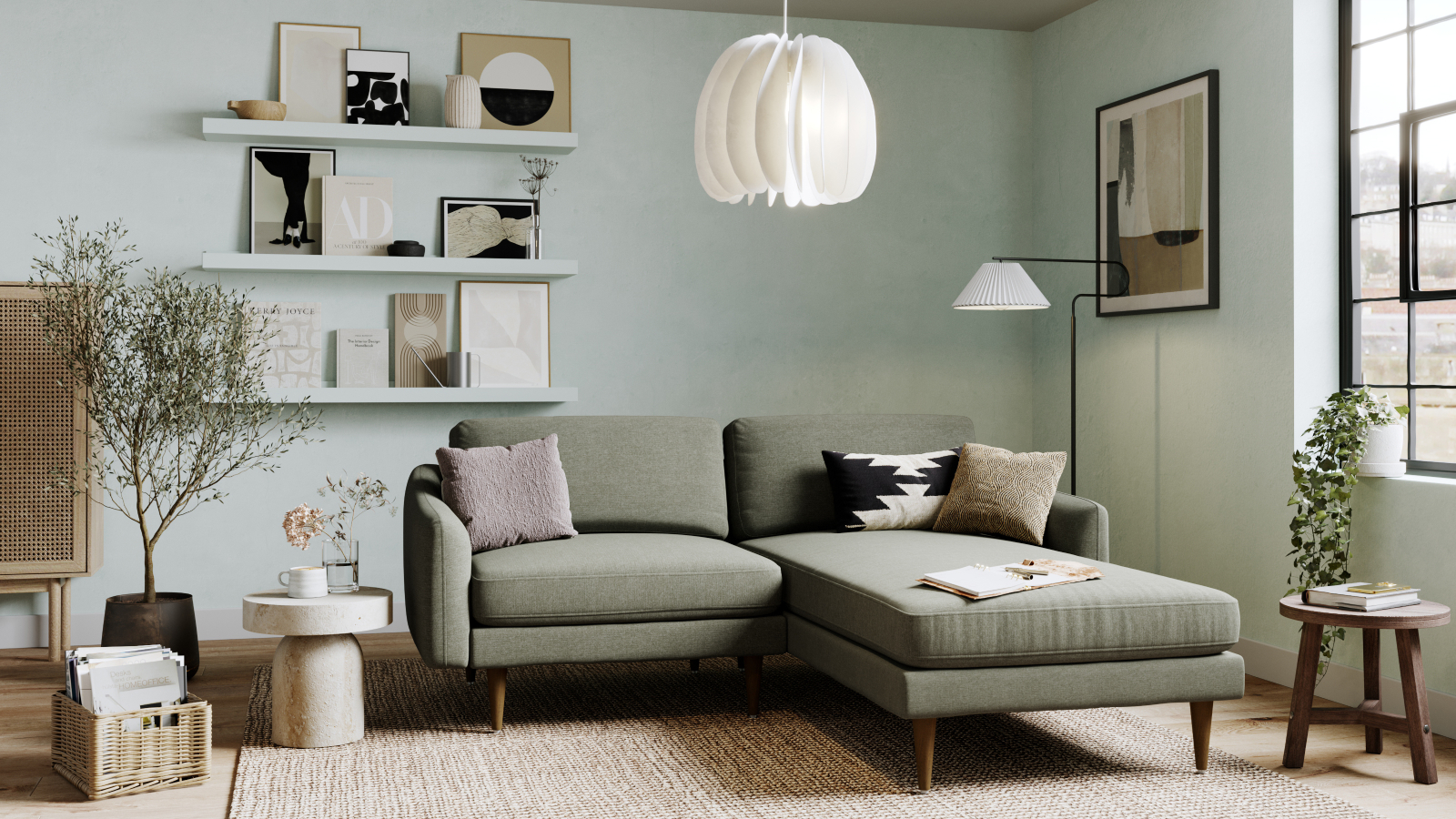
Picking the best colour for a living room won't just come down to personal preference. As with most rooms in your self-build or newly renovated home, colour choice is also influenced by the overall living room design - including room size, aspect, the amount of natural light and just how you intend to use the space.
Add to this colour psychology - which suggests certain colours influence our mood in a positive or negative way - and the plethora of colour charts in the paint store may suddenly seem more problematic than you first thought.
But, whether you choose to stick with fail-safe neutrals or prefer to embrace a more colourful approach, we've obtained expert advice to help you choose the best colour for a living room in a way that works for you.
The best colour for a living room also comes down to the type of paint used
"Choosing the right paint finish is more crucial than you think," says Emma Bestley, co-founder & creative director for YesColours.
"It's like picking the perfect outfit for a job interview - if you don't get it right, you'll leave a bad impression. When thinking about living room paint ideas, it’s best to choose a matt emulsion for the walls and an eggshell for the woodwork.
"Choose a paint with a matt finish that really allows the depth of the colour to be seen," advises Emma. "This is especially important when using a rich or punchy shade. It should be easy to use and dry to a lovely finish, essentially allowing you to give your living room a brand new look in just a couple of hours.”
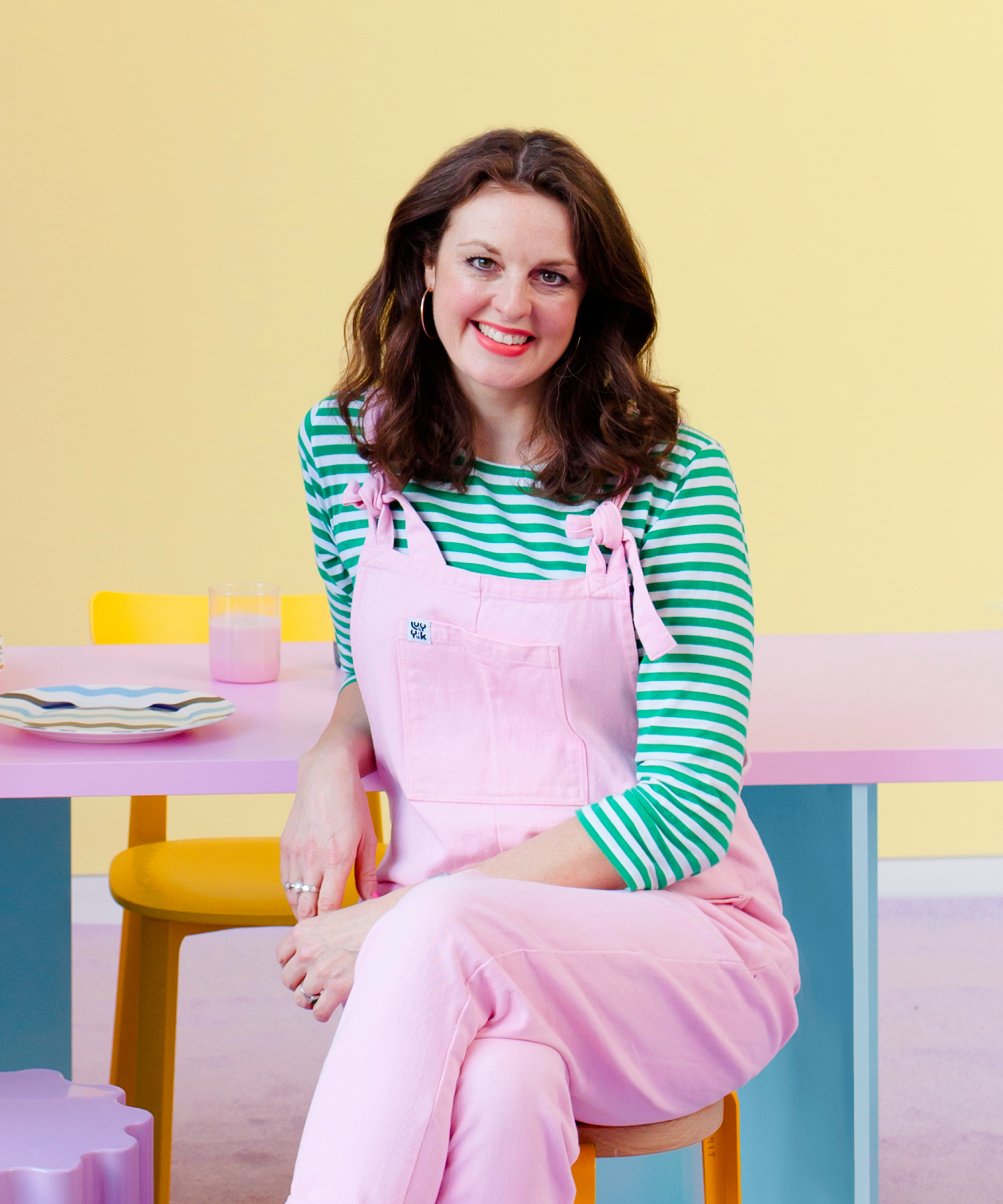
Homegrown eco paint brand, YesColours, was founded by friends, John Stubbs and Emma Bestley. Creative Director and Co-Founder Emma is perfectly placed to share her unique expertise on how to use colour in the home.
1. Pack a punch with primary colours
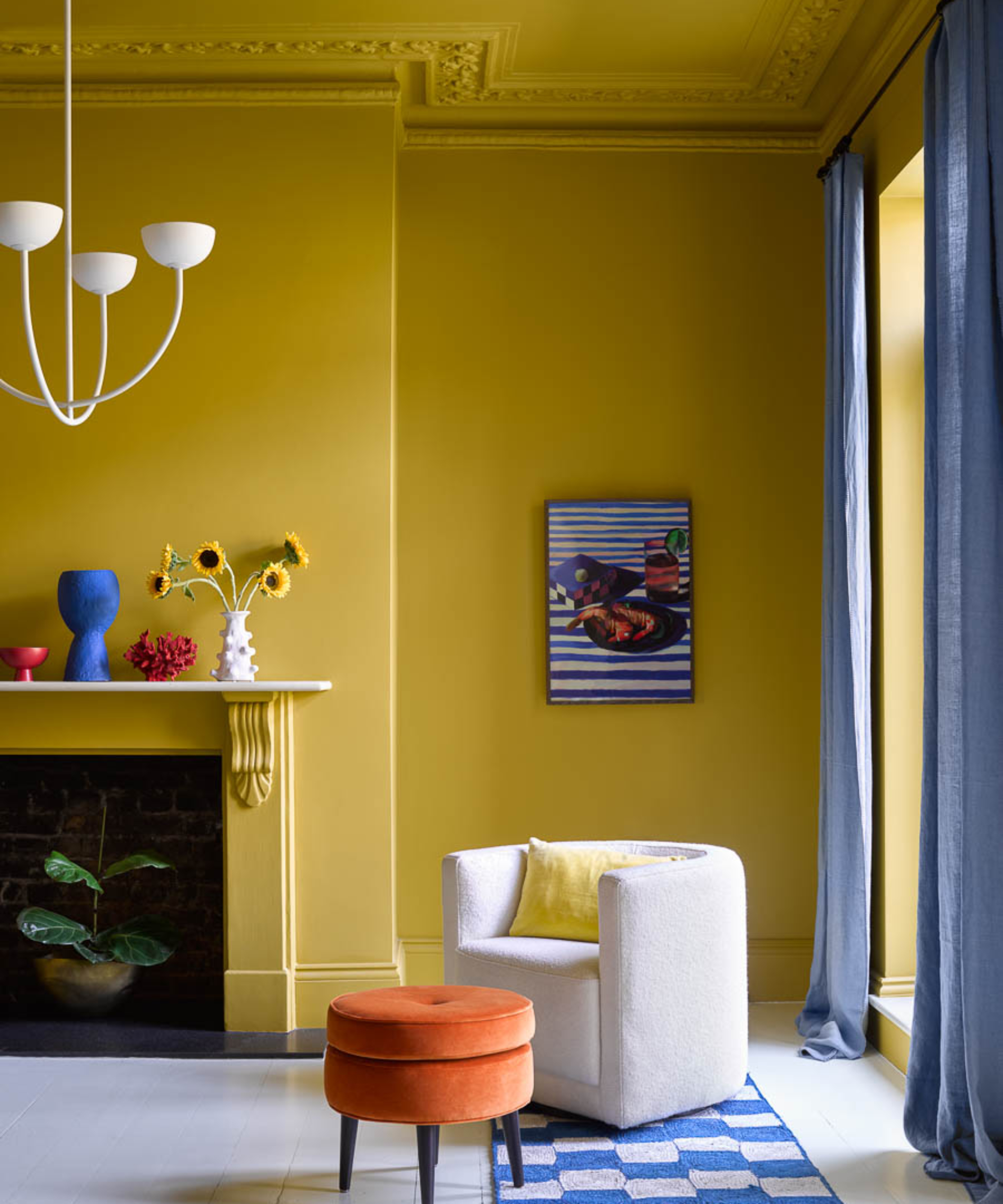
If a burst of sunshine yellow naturally seems to you like the best colour for a living room that's guaranteed to make you smile, you'd already be ahead of a trend say the experts.
“Primary colours are having their moment right now," says Helen Shaw, director of marketing (international) at Benjamin Moore.
"From an alluring mid-tone blue to a cheerful yellow, these brights are a great way to elevate any living room scheme. For a statement look, colour drench the walls, skirting boards and even the ceiling – it will create impact whilst also acting as a blank canvas to layer complementary colours in your furniture and accessories.”
Head to Designer Paint and try a combination of Benjamin Moore Honeybee and Blue Nova for an eye-catching blue and yellow combination.

Helen Shaw is part of Benjamin Moore's UK division. A colour expert and international marketing director, Helen is no stranger to the paint industry and benefits of colour, having also previously founded a paint company with her husband, Craig.
2. Choose rust tones for a warm and welcoming space
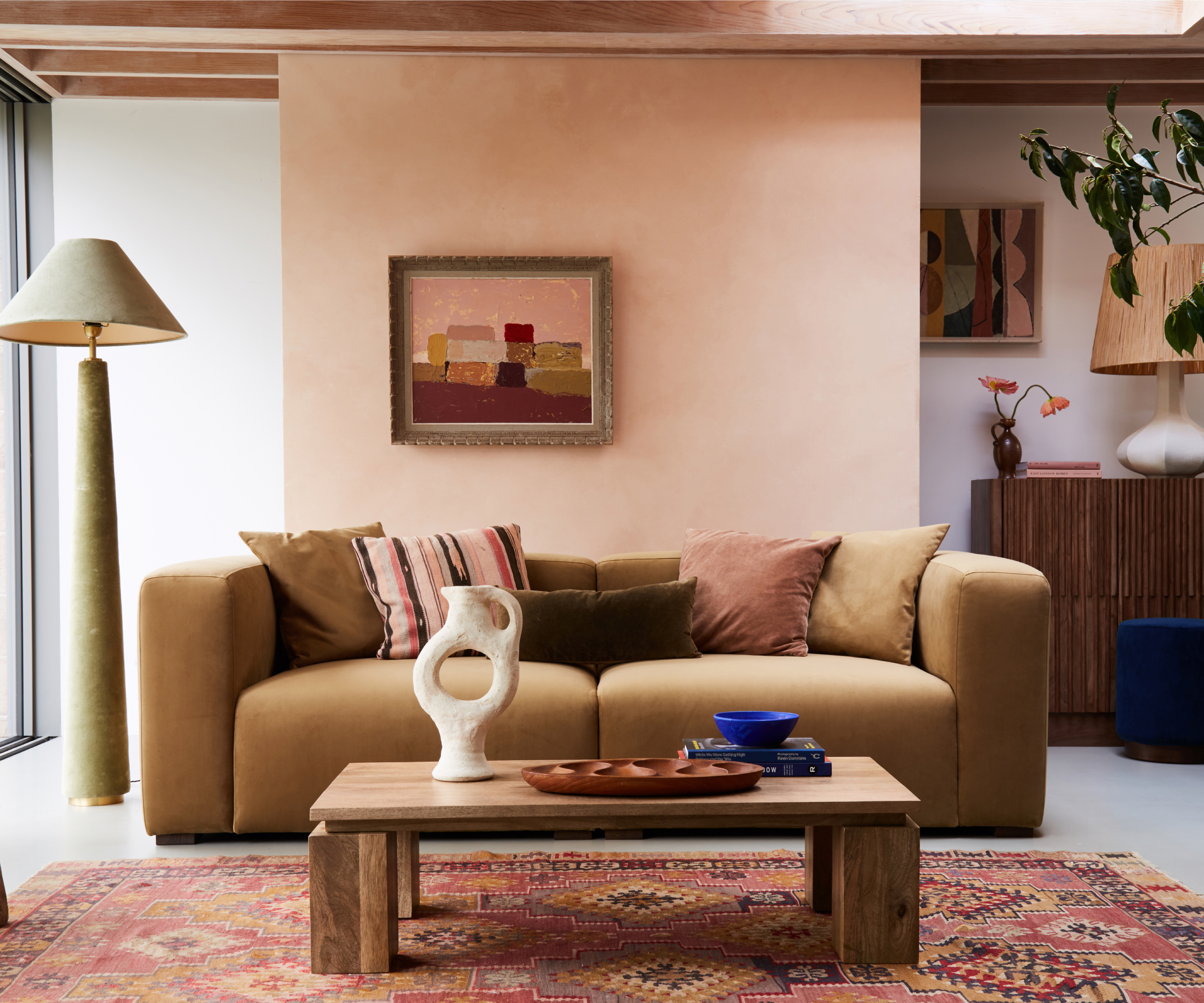
Influenced by Scandi-style design trends, warm neutrals and beiges are still proving to be popular choices with customers this year according to the interior design experts at Barker and Stonehouse. Amongst these softer shades, other richer and uplifting hues are also rising in popularity, says the furniture retailer.
“We've also observed a notable increase in sales of sofas in warm orange tones, like rust and peach, as well as rich coffee browns," says Lena Gierasinska, head of product and displays at Barker and Stonehouse These comforting shades create a welcoming atmosphere, suggesting a trend designed for opening up homes to others and socialising.”
Add plenty of living room lighting ideas to your scheme to ensure it also glows at night and cocoons you in its warmth.
3. Pair teal with orange if you use your living room mainly at night
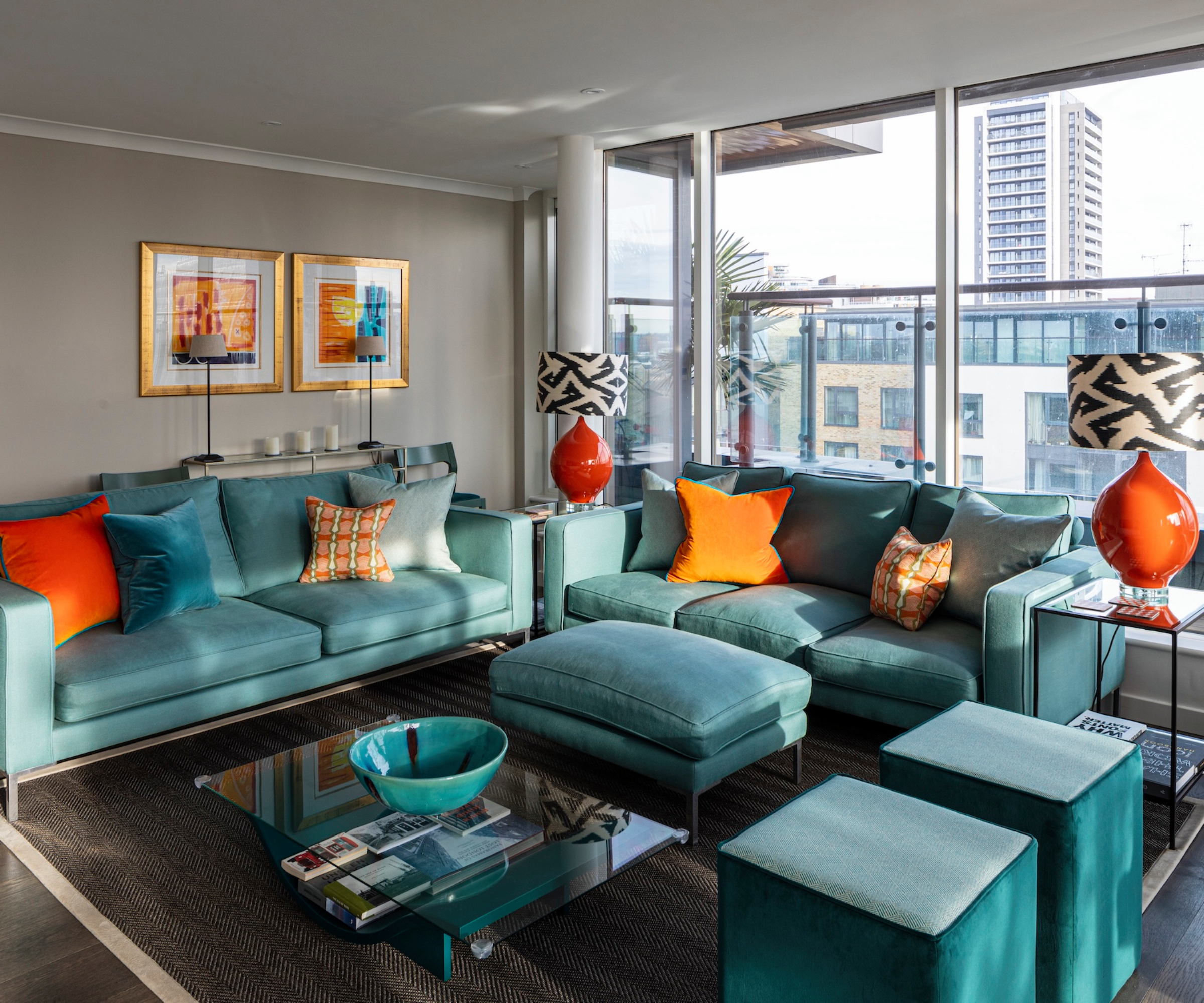
As those of you already well versed in decorating and colour options, choosing the best colour for a living room will come down to the natural light and space within the room, as much as personal choice. In fact, its the impact of light that experts suggest should be your starting point.
"It’s important to think of the optimum time you will be using your living room and work backwards from that," says Emma Bestley.
"If you only use it at night for example, be sure to use articificial light when you sample your colours. The darker they are, the more they will darken as the night draws in. Deep jewel tones of blue, terracotta, green and teal are ideal for a cosy, intimate space at night."
4. Use green - it's the new neutral
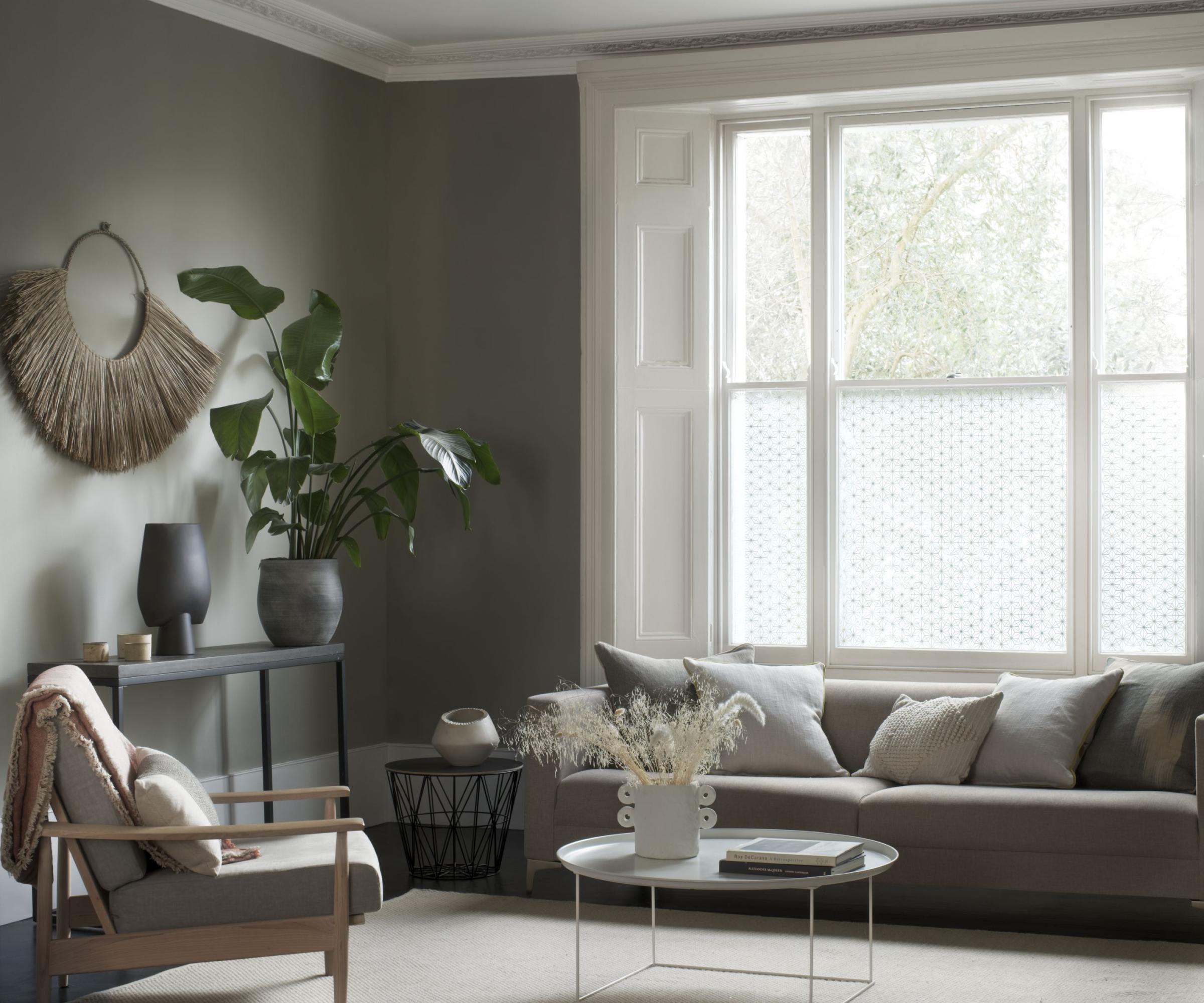
"Green is a wonderful choice for a living room. Its connection to the natural world means it will effortlessly create a restful and relaxing atmosphere," says Helen Shaw.
"For a show stopping look guaranteed to impress guests, cover the walls in a soft almost sage green. Understated and refined, it creates a quiet luxe feel that is calming and subtle yet never boring; perfect for spaces you want to welcome guests.
"For an on-trend look forget beige and greige and choose new neutral living room ideas instead, using colours such as Hazy Skies OC-48," suggests Helen. "It's a colour with mysterious depth that will instantly add intrigue. Elevate this captivating base colour that’s timelessly stylish with layers of texture in your accessories and living room decor.
5. Combine blue, cream and grey for a coastal inspired scheme

If you think blue might be the best colour for a living room, you could be right - although I'll admit to being slightly biased as it's the colour I have in my living room.
What needs more consideration however is the shade of blue that you choose. With some blues falling on the cooler side of the colour spectrum, it's important to get the shade right so that you create a welcoming space.
"When it comes to the living room, a classic colour scheme that always works well is pairing blue and grey," says Emma Deterding, founder and creative director of Kelling Designs and Kelling Home.
"Not only do they complement each other perfectly, they can also blend together seamlessly too and often fall in line with the timeless, coastal aesthetic. The brighter shades and muted hues help create a calming space that can be updated time and time again with more affordable accessories to refresh the look," says Emma.
"You can really add texture and dimension to this by layering light and airy linens and natural textures that pay homage to the coastal look. I particularly love the versatility and the fact that whichever way you go, the colours will change according to the light available - they can blend together or stand apart."
If it's a scheme that appeals to you, it's also one that benefits from laying the best carpets for living rooms to ensure a soft finish underfoot.
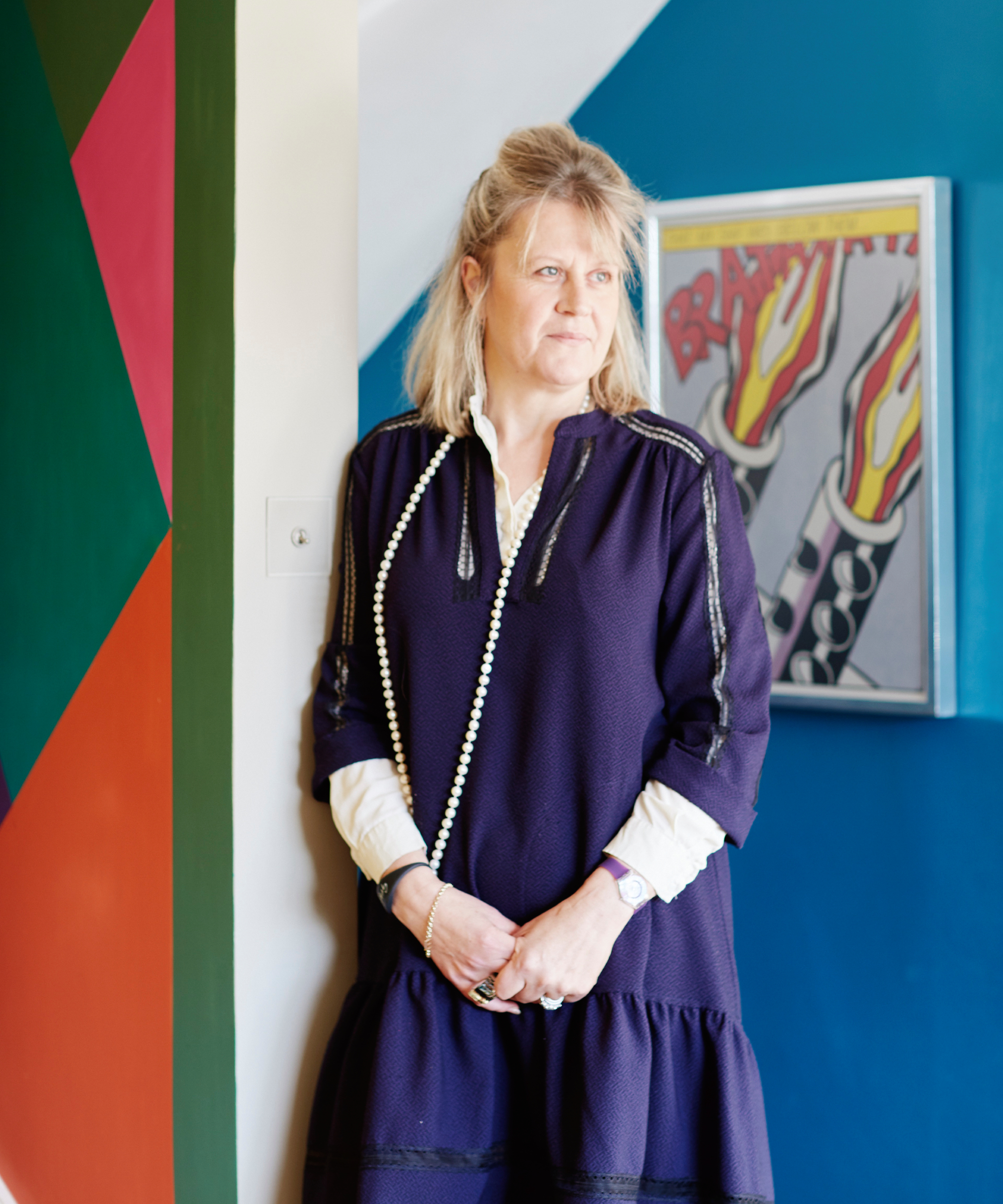
Emma Deterding is a leading interior designer who has been named among the top 100 in the world. With over twenty-five years of experience, Emma has honed her ability to offer well thought-out schemes for private clients, embracing colour and pattern and using them to their maximum effect.
6. Pair pink and green for a pretty living room colour scheme
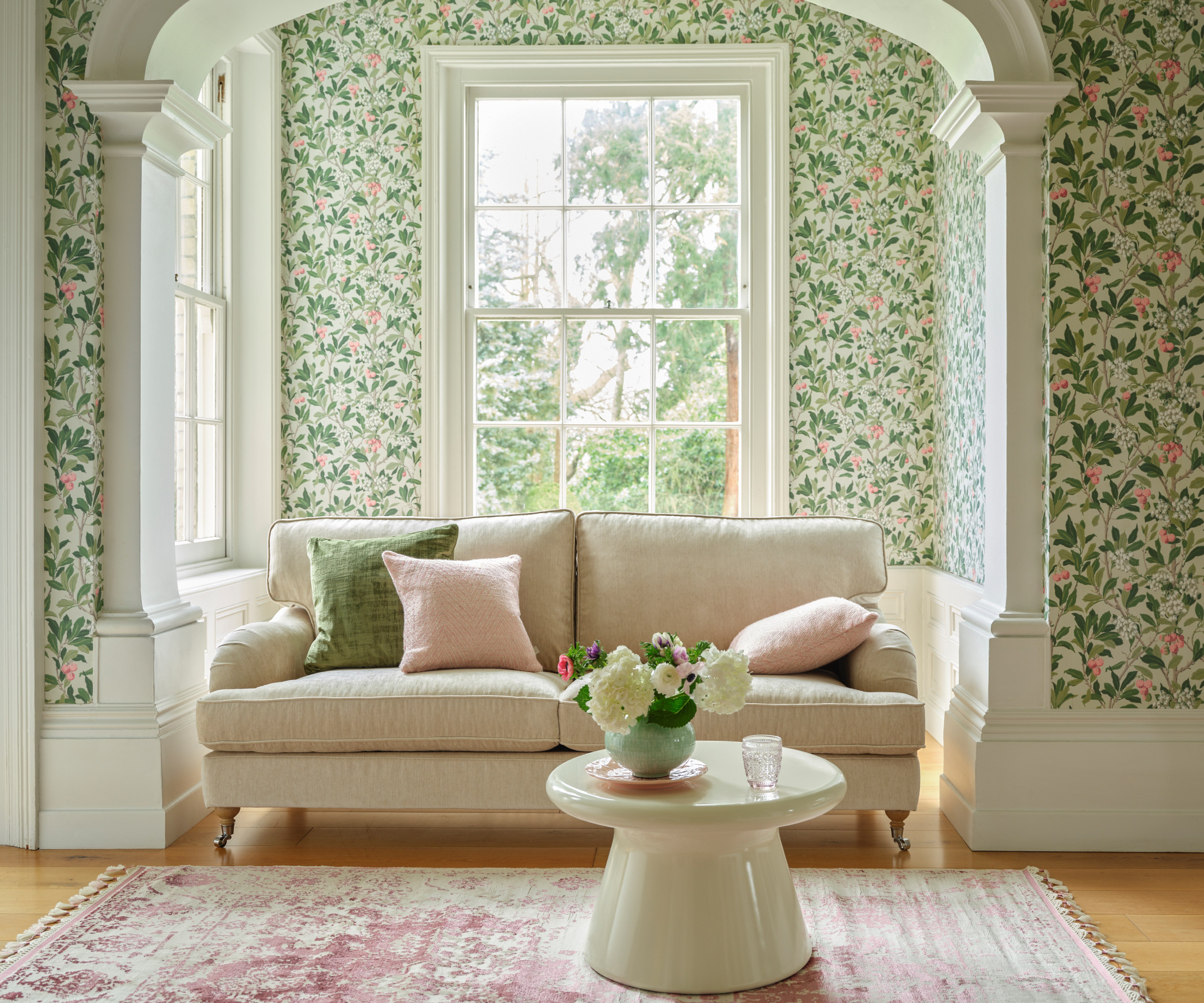
Although green as the best colour for a living room works well alone, it's also a great companion to other shades, including pink.
In a pretty countryside setting where bringing the outdoors in is part of your overall aesthetic, choose a delicately patterned green and pink floral wallpaper and pair with cream sofas and furniture. For your living room flooring ideas, opt for wooden floors and and soften them with a pink toned rug.
It's one of the best combinations "if your living room is used mostly during the day and you want to create a fresh and airy feel," says Emma Bestley. "Opt for softer hues of peach, green and pink with a muted undertone to achieve a more serene environment."
Try this pretty pink and green Eglantine Laura Ashley wallpaper from Wallpaper Direct for a similar effect.
7. Boost a dark grey wall with contrasting pink and yellow

If cosy living room ideas are the ones that appeal the most, it's likely you will be leaning towards darker shades of grey, black or blue when choosing the best colour for a living room.
As well as acting as a canvas for adding pops of brighter tones, darker colours can also be used to help with the size and shape of your room.
"Using slightly darker colours can also create an illusion, tricking the eye into thinking that a wall is further away," says Anna Hill, brand director and colour consultant at Fenwick & Tilbrook.
"So if your room is long and thin, paint a dark colour at either end to draw the eye through the room. It'll help make the room appear less rectangular. Another great tip is to take the same colour from the walls down onto the skirting board. This gives the appearance of a higher ceiling as the colour continues down from the ceiling to floor."
“It’s time to rethink how we work with colour in our living rooms, starting with paint," agrees Dani Burroughs, Head of Product for Snug.
"It’s an important decision as the right colour can make the ideal backdrop for your sofa and furniture. Gone are the days of drab, mismatched woodwork. Embrace the power of colour and transform your home into a modern masterpiece by continuing the wall colour onto the woodwork. Trust me, you won't regret it.”
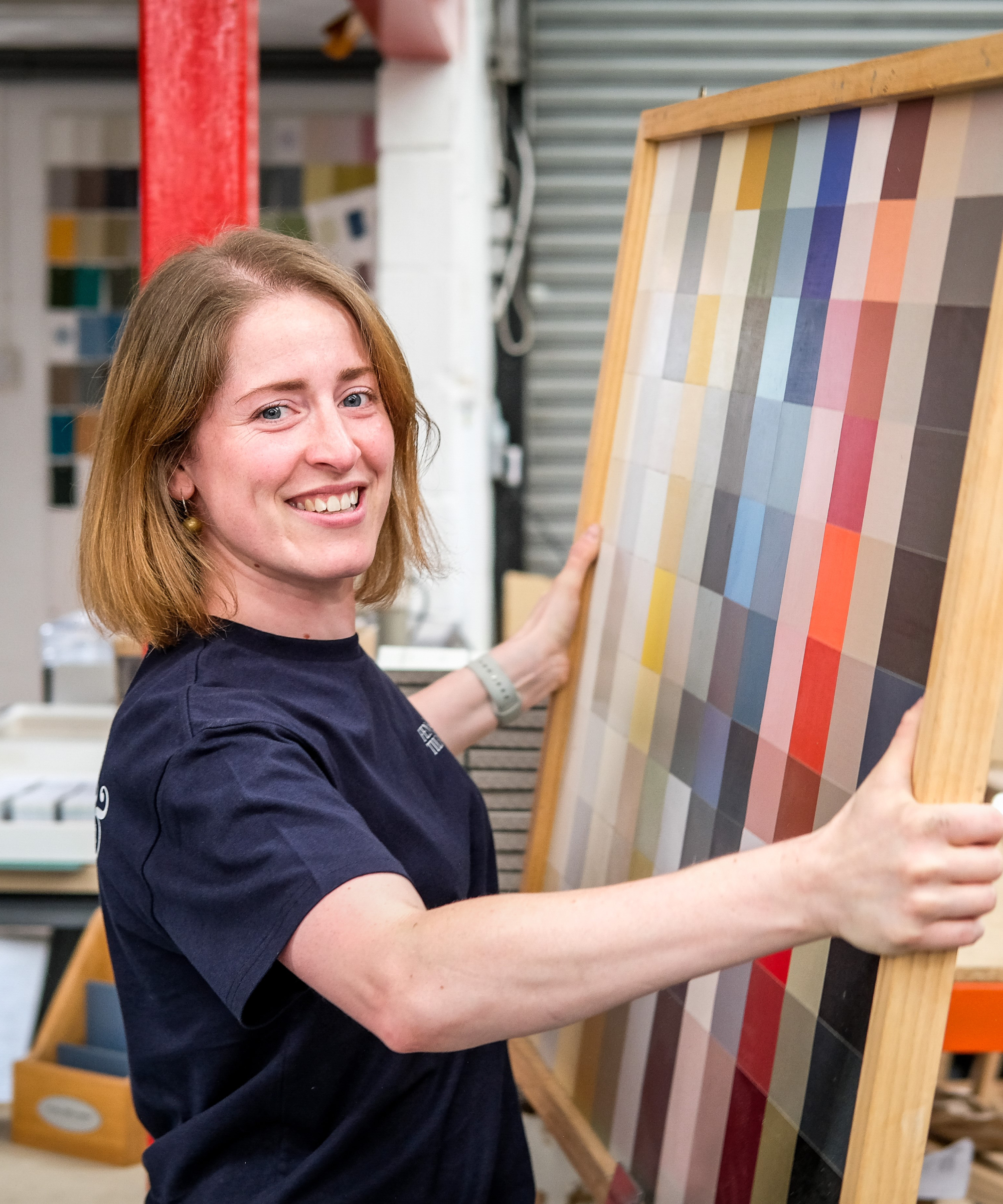
Anna returned to head up the family business after gaining valuable experience in merchandising and now uses her skills to help the company produce its renowned range of pigment rich paints.
8. Use neutrals as a base and layer with colours and patterns
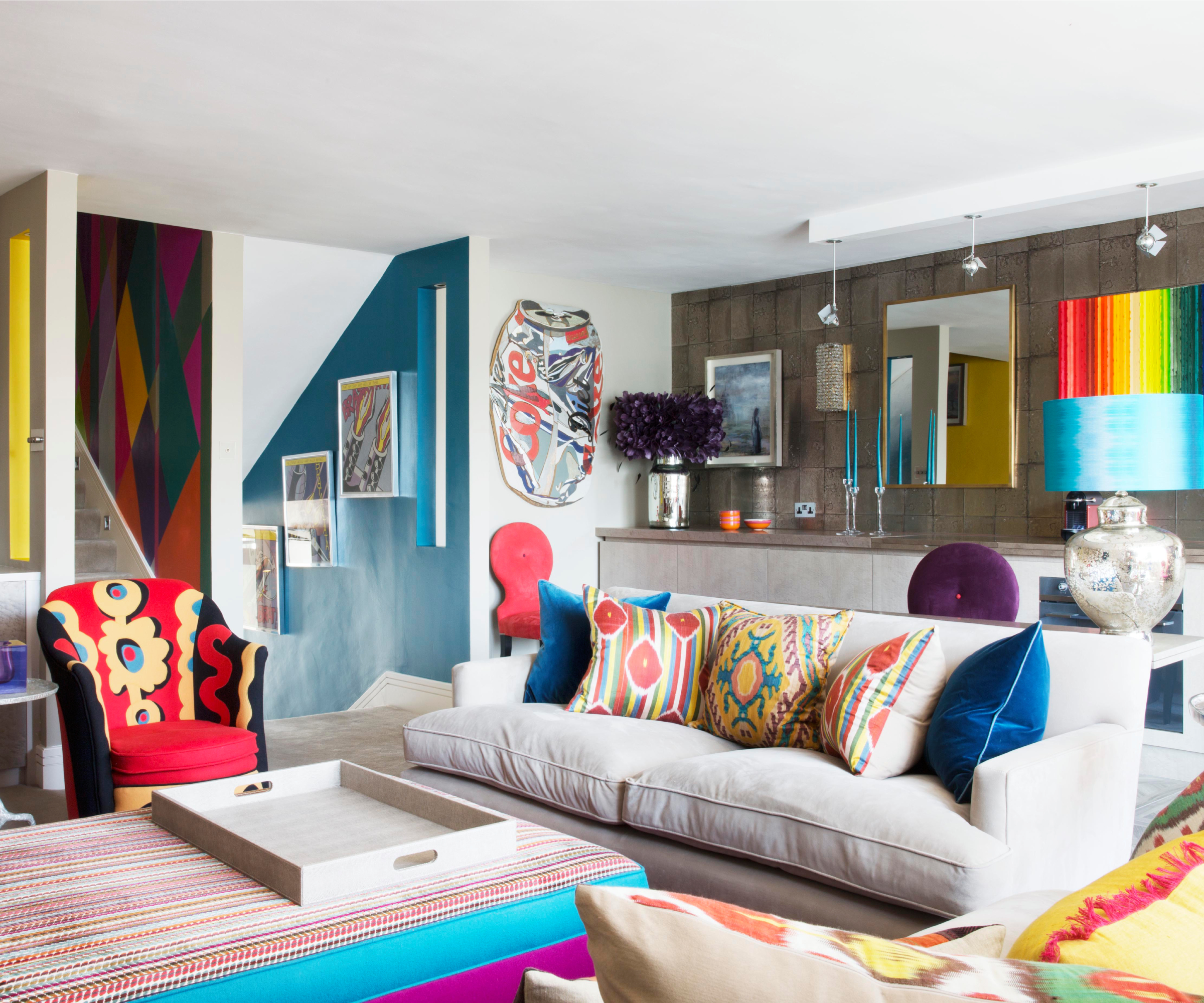
If you consider beige the best colour for a living room, instead of opting for neutral living room ideas, instead use it as an opportunity to be more expressive with patterns and colour. It can be the perfect bases for modern living room ideas that embrace colour and clean lines.
"Using beige as your base colour for walls and even flooring is great because it allows you to have full flexibility with your furniture and accessories," says Emma Deterding.
"More often than not, people are slightly afraid of using bold colours and patterns, especially on larger, permanent parts of the room such as the walls, so going for beige is a safer bet, allowing you to transform your room time and time again.
"What's more," adds Emma, "having beige walls allows key pieces of furniture in the room to really stand out, whether it's a luxurious, jewel-toned velvet sofa or an armchair in a bold pattern. It also allows you to make a statement of any artwork you have up, allowing the art to do all the talking.
"True maximalism isn't for the faint hearted, so using a warm, neutral base such as beige allows you to really play around with your design choices, and actually helps to balance the scheme.
"if you have a living room that has beige on the walls and a neutral floor, then treat it as a blank canvas," suggests Emma. "If you want a more cohesive look, then use two or three complementary colours and continue these across the space. However, for those who are more daring, then I'd say release your inner maximalist and let colours and patterns compliment and contrast each other to make your own design statement.”
9. Choose black. It can create a surprisingly warm and sumptuous scheme
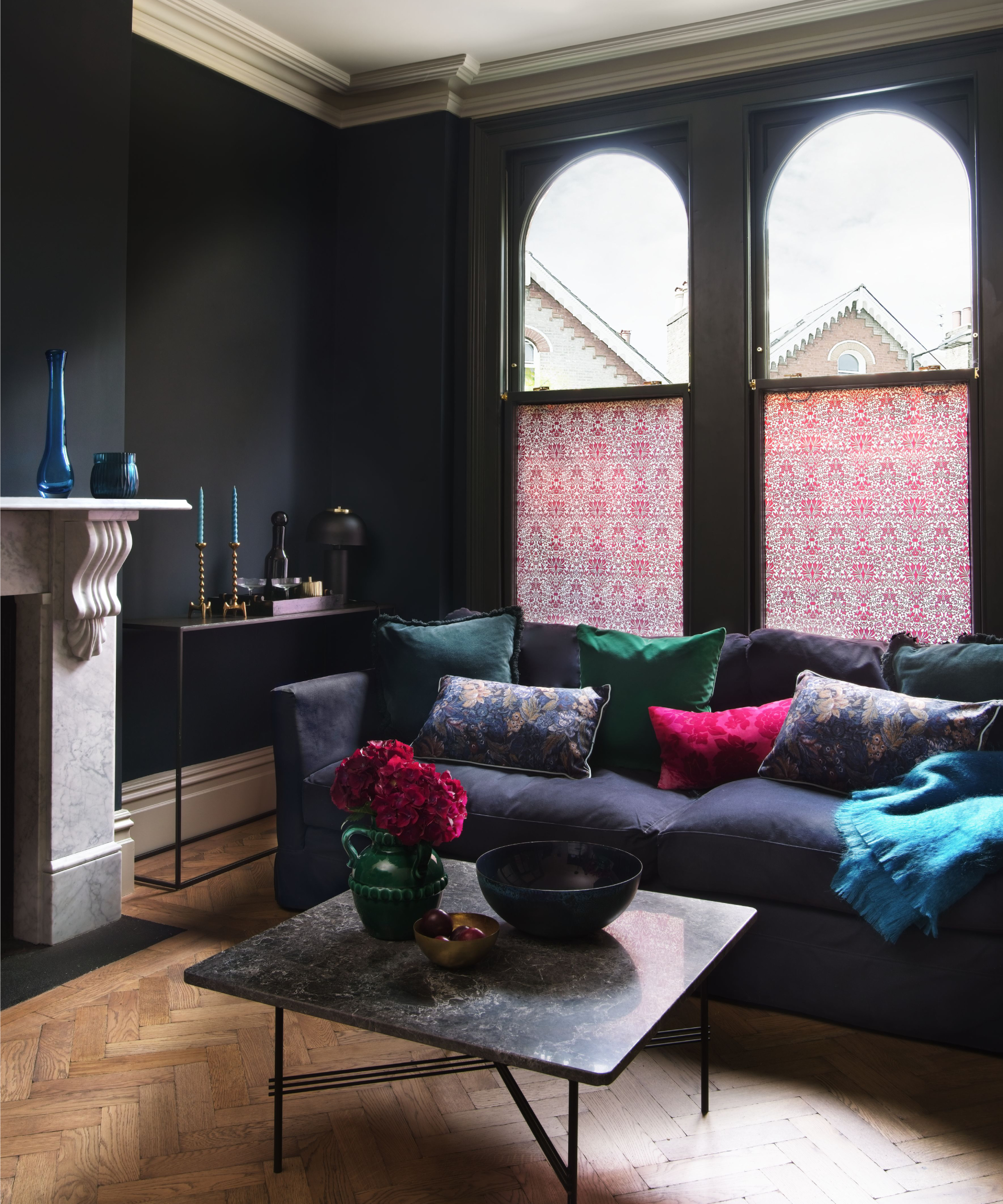
“Be brave with your colour choices and dare to go dark in the living room," says Joanna Baumard, co-founder of Purlfrost. "It creates a cocooning feeling that makes leaving the sofa nearly impossible.
"People are becoming bolder with design choices, often opting for really deep, inky blues and charcoal greys for a dramatic statement that evokes a cocoon-like effect," agrees Emma Deterding. "This is ideal for the living room, a space in which you want to kick back, relax and unwind after a long day."
"If you find you’re overlooked by neighbours, you could also consider an alternative to frosted window film and choose a coloured decorated design instead for your window finishes," suggests Joanna. "It creates maximum impact and gives the ultimate privacy – not to mention great curb appeal from the outside too.”
Window film is also a great solution for minimalist living room ideas where curtains or blinds may feel too fussy for a less is more scheme.
10. Combine navy sofas with dark wood and cream highlights for a classical contemporary scheme
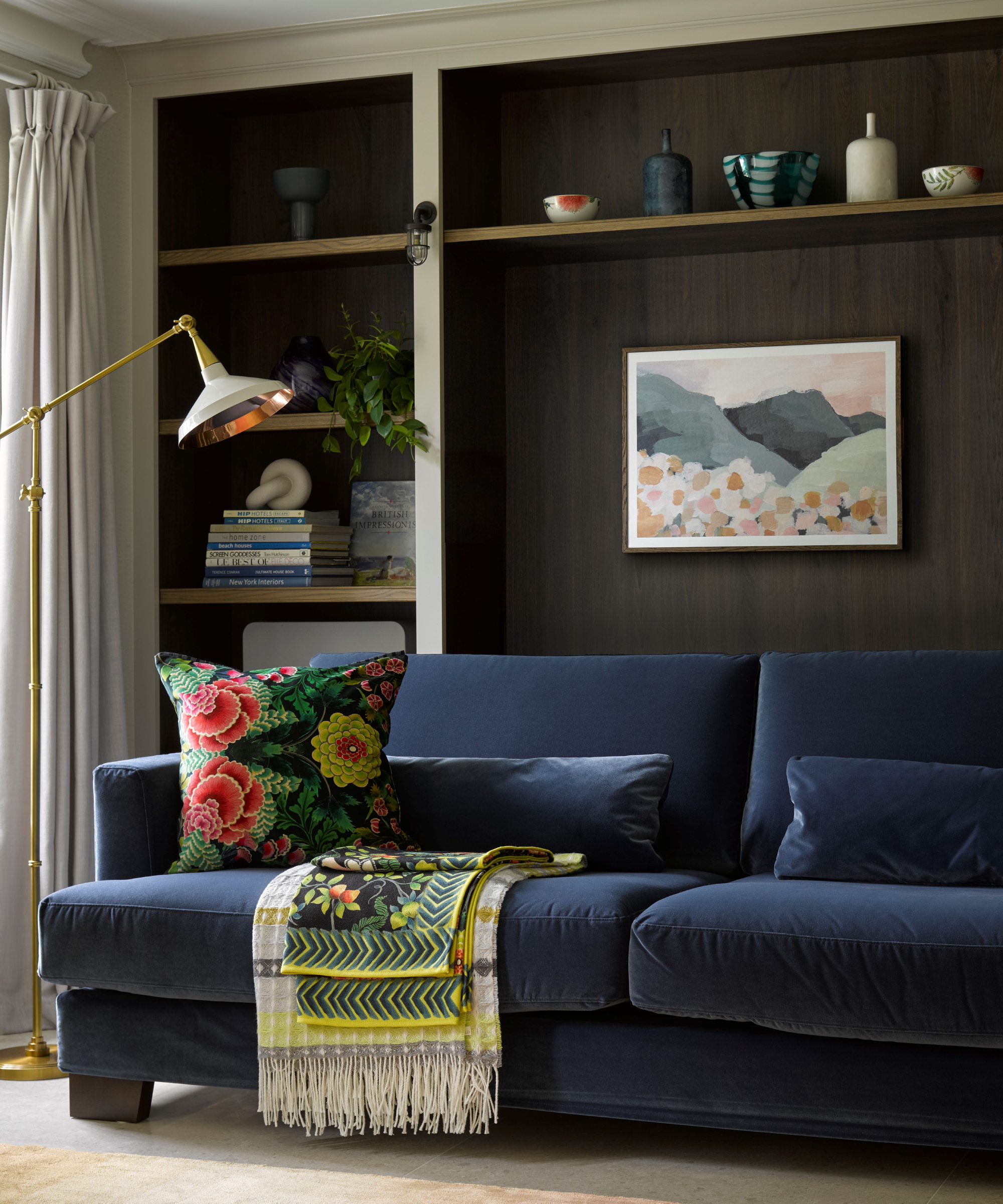
Nothing beats navy blue for a living room idea that's classical, contemporary and timeless. But instead of using it on your walls, opt for it as the best colour for a living room sofa instead and add a modern twist to living room panelling ideas by incorporating dark wooden shelving with a lighter cream trim.
“If you think you can’t contrast pale and dark colours in one room, think again," says Caron Grant, brand manager at Bridgman. "Playing with light and shadow is a surprisingly easy way to create amazing atmosphere, ambience and depth in any space.
"As an alternative to the dark wall and light ceiling approach, picking a softer, lighter shade for your walls and pairing it with a deep, painted ceiling will also infuse your room with instant cosiness," she adds.
11. Pair grey sofas with a lavender hue on your walls
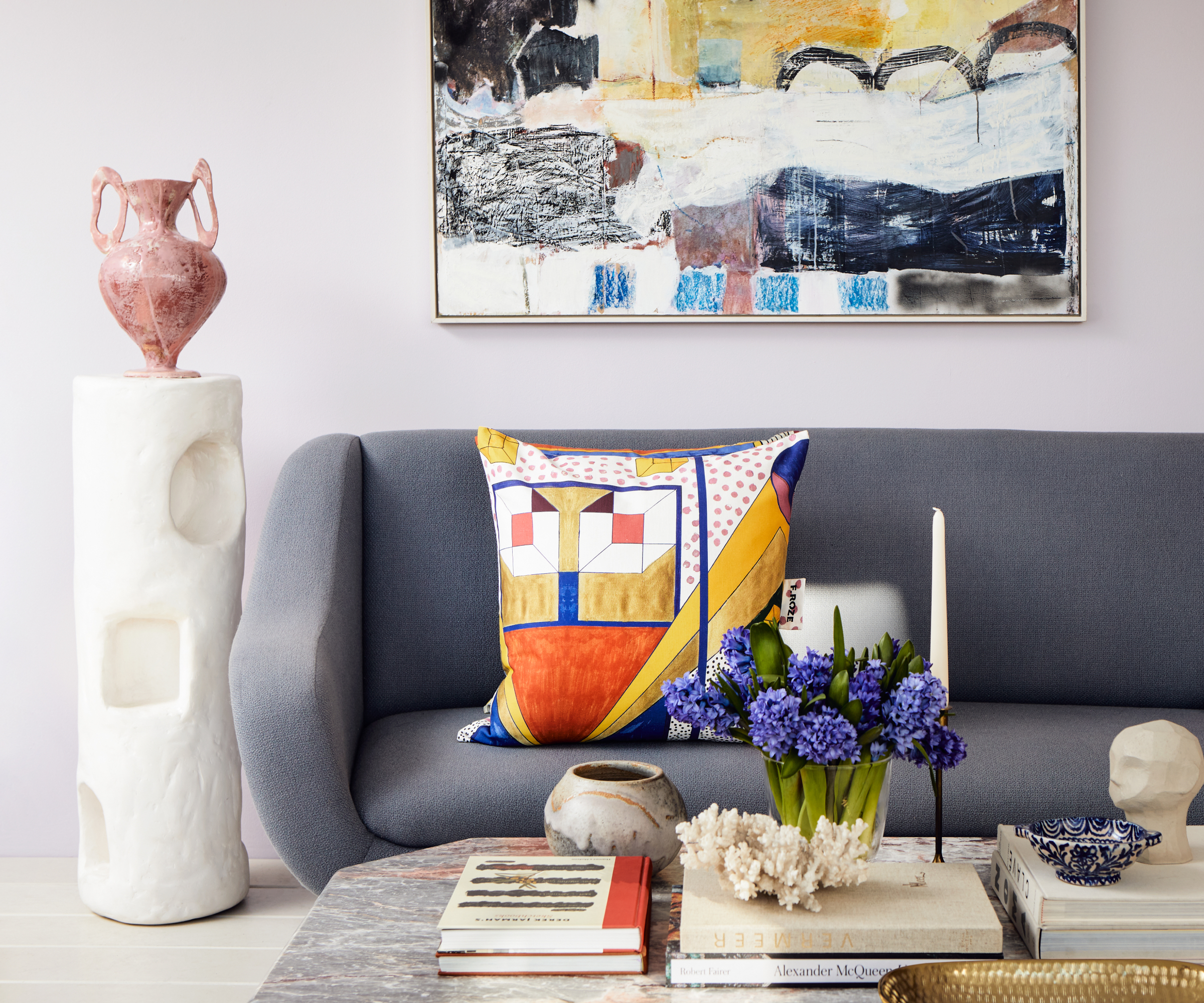
If you want to keep your grey sofas but are keen to update your grey walls, opt for a shade with pastel hues say the experts.
"Cocooning a space in a softer pastel hue can be used to create a comforting scheme that feels bright and uplifting," says Dominic Mylands, CEO of Mylands. "Using soft coloured tones as an alternative to a classic white shade, also adds interest and modernity to a living room."
To further lift your scheme out of the grey era, add brightly coloured art and accessories.
If you're searching for small living room ideas and suspect that size, or rather the lack of it, will have the most impact when it comes to choosing the best colour for a living room, Anna Hill shares some final advice.
"When it comes to decorating your living room, there are many things you can do to help make the space feel bigger than it is - which is especially key if space is at a premium.
"If your living room is small and lacking natural light it may be best to just accept it and embrace a cosier scheme. That said, many people crave lightness and brightness in their home so an off white which has a pink, taupe or peach undertone will be warming, light and help to make the room feel bigger.
"Light, cool colours recede so opting for a cool tone on the walls will make them appear further away."
Get the Homebuilding & Renovating Newsletter
Bring your dream home to life with expert advice, how to guides and design inspiration. Sign up for our newsletter and get two free tickets to a Homebuilding & Renovating Show near you.

Sarah is Homebuilding & Renovating’s Assistant Editor and joined the team in 2024. An established homes and interiors writer, Sarah has renovated and extended a number of properties, including a listing building and renovation project that featured on Grand Designs. Although she said she would never buy a listed property again, she has recently purchased a Grade II listed apartment. As it had already been professionally renovated, she has instead set her sights on tackling some changes to improve the building’s energy efficiency, as well as adding some personal touches to the interior.
